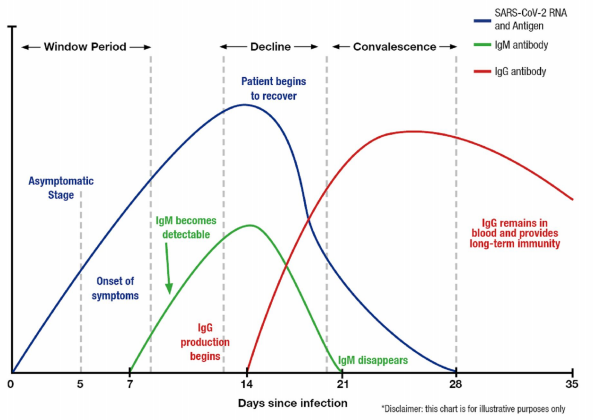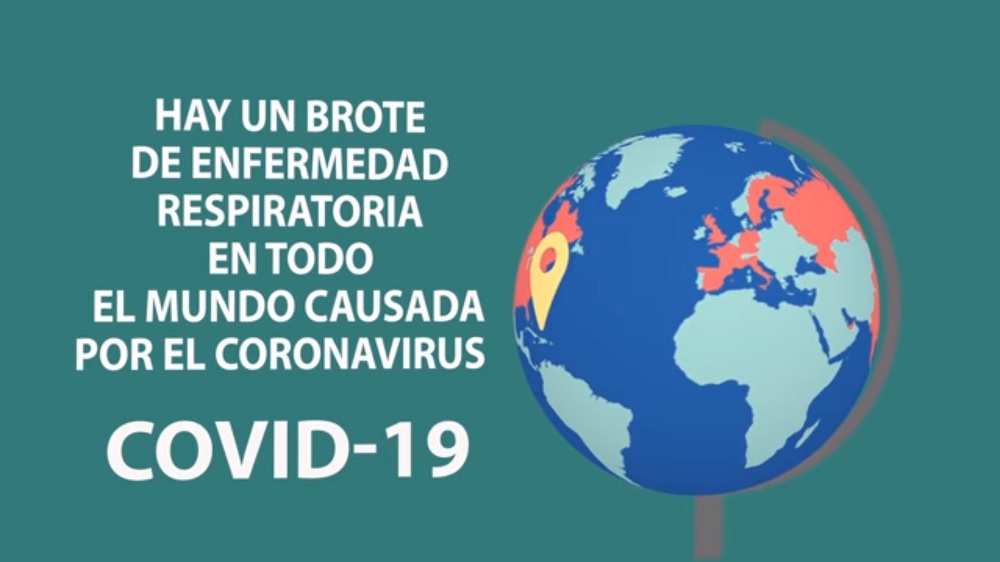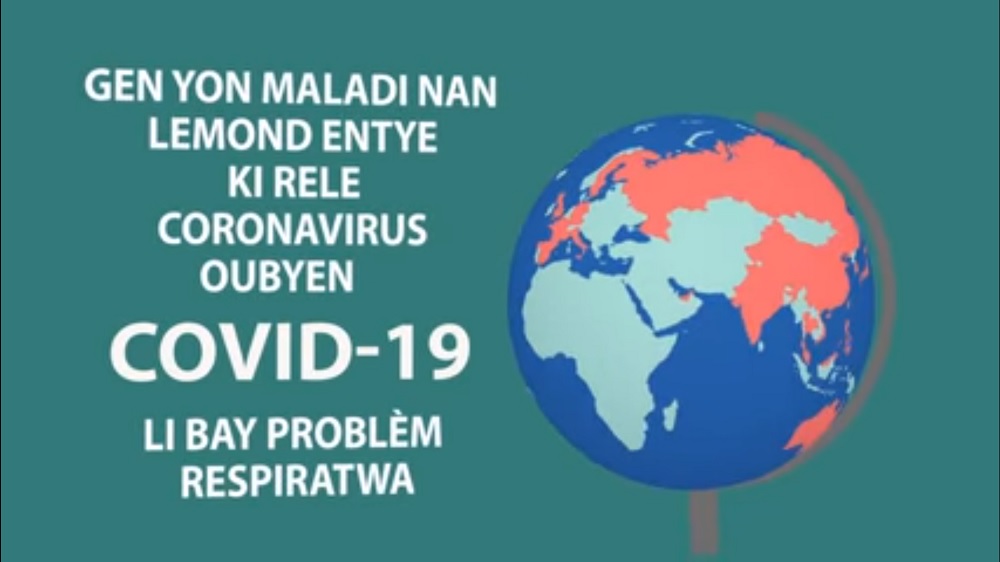TESTING FOR SARS2 in COVID-19
April 28, 2020 9:00 pm
In the ongoing pandemic of COVID-19 it is important to establish who is actively infected or was infected with the causing SARS-CoV-2 virus. By doing so adequate treatment can be provided, preventive measures can be taken, epidemiological surveillance and research in a community can be conducted and protocols and policies can be developed or measures can be loosened up.
In light of the hype surrounding testing in COVID-19 and everyone suddenly becoming an expert in the area of testing, before having and sharing an opinion one should have a proper understanding of the disease, the type of tests and the concepts of sensitivity, specificity and validation of tests and interpretation of a test result in relation to the clinical manifestation.
Sensitivity ? the ability of a test to detect the intended substance in the human body i.e. antibodies. If the sensitivity is lower than 100%, false negative results will occur.
Specificity ? the ability of a test to be unique in such a way that it provides a negative result in someone who has not been infected. If the specificity is lower than 100 %, false positive results will occur.
Validation ? establish whether the test can be applied for the purpose it is meant for (reliable) with achievement of near 100 % sensitivity and near 100 % specificity. The margin of error must be known and understood in the interpretation of test results.
Before a test can be made available and applied it has to be validated and certified by the FDA (FDA certificate) or obtain the European CE Marking (CE certificate). Certification indicates conformity with US or European health, safety and environmental protection standards. A certified product can be commercialized within the territory of the USA respectively the European Economic Area and must be accompanied by technical documents on the product and its use.
Under section 564 of the Federal Food, Drug, and Cosmetic Act (FD&C Act), the FDA Commissioner may allow unapproved medical products or unapproved uses of approved medical products to be used in an emergency to diagnose, treat, or prevent serious or life-threatening diseases or conditions caused by CBRN threat agents (chemical, biological, radiological and nuclear agents) when there are no adequate, approved, and available alternatives, a so called FDA EUA certificate. An FDA EUA certificate will always contain terms which caution potential users of the product on the limitations of the product.
The tests that are currently available are the following.
A. Molecular tests i.e. RT-PCR tests (reverse transcriptase - polymerase chain reaction) The tests quantify transcript RNA levels in cells and tissues. Transcription is the first of several steps of DNA based gene expression in which a particular segment of DNA is copied into RNA (ribonucleic acid). The COVID-19 RT-PCR test is a real-time (rRT-PCR) test for the qualitative detection of SARS-CoV-2 nucleic acid (genetic material) in upper and lower respiratory specimens (such as nasal, nasopharyngeal or oropharyngeal swabs, sputum, lower respiratory tract aspirates, bronchoalveolar lavage, and nasopharyngeal wash/aspirate or nasal aspirate) collected from individuals suspected of COVID-19 by their healthcare provider. Clinical correlation with patient history and other diagnostic information is necessary to determine patient infection status.
A positive test result for COVID-19 indicates that RNA from SARS-CoV-2 was detected, and the patient is presumptively infected with the virus and presumed to be contagious.
The approved rRT-PCR tests are currently the most reliable (highly sensitive and specific) test available to detect an infection with the SARS-CoV-2 virus, especially in the early stages of an infection. Swabs must be taken properly to avoid false negative test results. They are used as the primary diagnostic test for SARS-CoV-2 infection.
B. Serological immune assay tests
These tests detect (viral-bacterial) specific antibodies (specific proteins called immunoglobulins IgM, IgA and IgG) in a disease and are meant to establish whether a person has been recently infected or in the past or if a person is immune. Rapid and many POC (point of care) tests belong in the category of serological tests.
Antibodies against a viral or bacteriological agent are developed typically 1-2 weeks after someone has become sick, while RNA is detectable at an earlier stage.
Variation of the Levels of SARS-CoV-2 RNA and Antigen, IgM and IgG after infection.
In the case of SARS-CoV-2, many of the serological tests for antibodies still lack the required specificity and sensitivity, potentially leading to false negative or false positive test results. Due to these limitations serological tests have not been validated as yet for individual diagnostic testing for SARS-CoV-2 by the CDC and the FDA in the USA, in Europe and not by the RIVM in the Netherlands up till today. This might change in the near future as many serological tests are currently being evaluated.
For now, the use of tests for antibodies are limited to being an additional test to the rRT-PCR tests to establish whether a person had an immune response to SARS-CoV-2, whether symptoms developed from infection or the infection was asymptomatic.
Some of these tests have been designed and validated for broad-based surveillance and research that will provide information needed to guide the response to the pandemic and protect the public?s health. The results of these studies will allow the authorities to estimate how many people have been infected nationally. The results will also provide information about the percentage of residents who have not had COVID-19 and are still at risk for infection.
The public must be warned as well that there are currently many non-certified and fake serological tests being sold.
Which persons should be tested? This depends on the national testing policy as determined by the relevant health authorities and on sampling and testing capacity including availability of test kits. The testing policy and criteria are usually based on the current case definitions for COVID-19 and prioritization of test capacity. Usually, those who meet the criteria of a ?suspect case? and a ?contact? are the ones that should be tested.
Can an employer demand testing of an employee? No, unless this is agreed upon in a labor agreement or CAO in relation to safety and security on the work floor. However, the employer has the right and also the obligation (with reference to responsible employer ship) to deny entry to the work floor in case of a suspected highly contagious disease until proven negative and vice versa the employee has the responsibility (with reference to responsible employee ship) not to be present on the work floor when being a serious health risk to others until proven to be non-contagious.
Can the health authorities demand involuntary testing of a subject? Yes, under the National Public Health Ordinance this is possible for the diseases categorized as a ?Category A? disease. This currently includes COVID-19. The law also stipulates that a specific procedure must be followed to mandatory test the subject in these circumstances.
Source: sintmaartengov.org 









